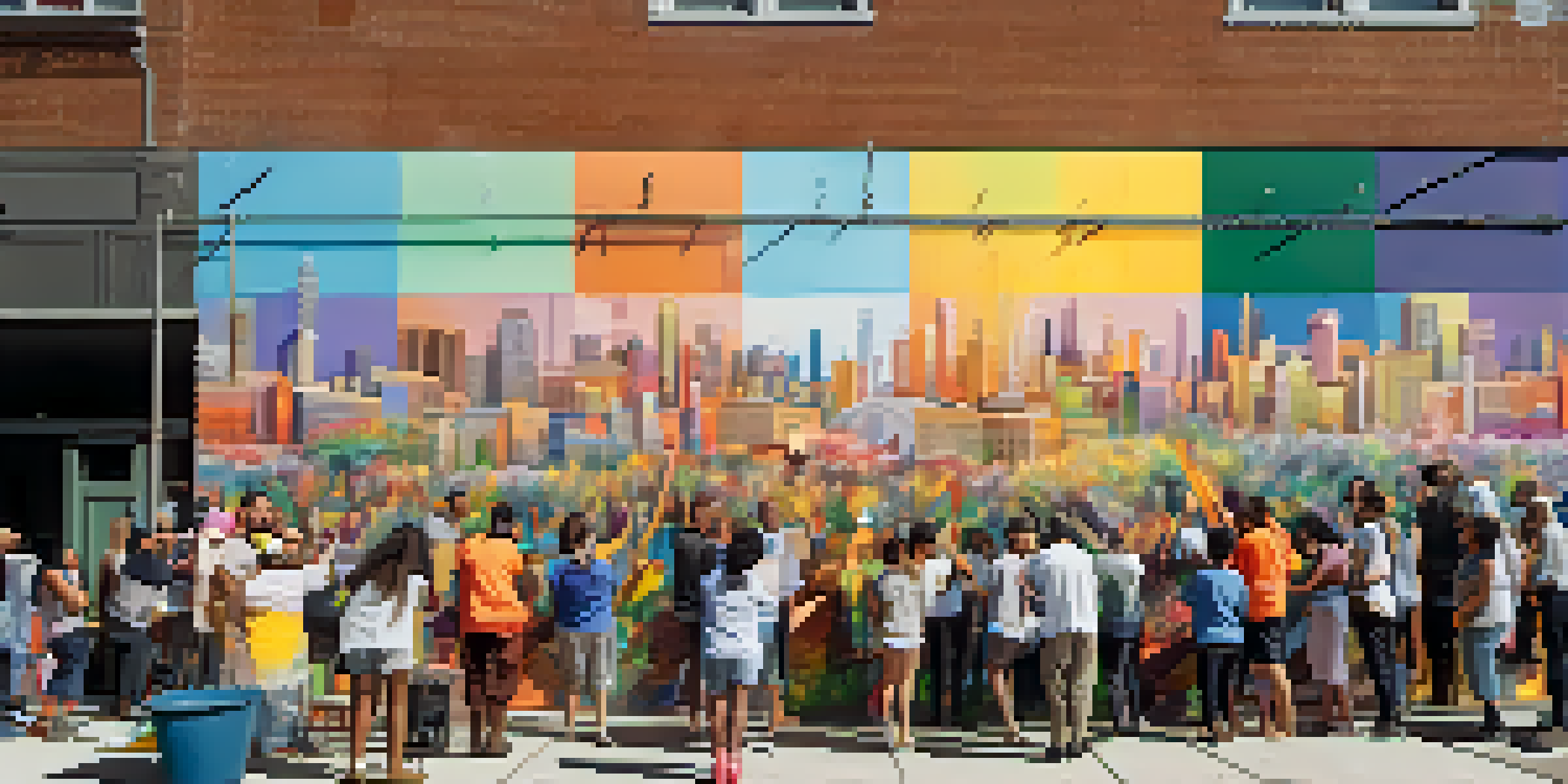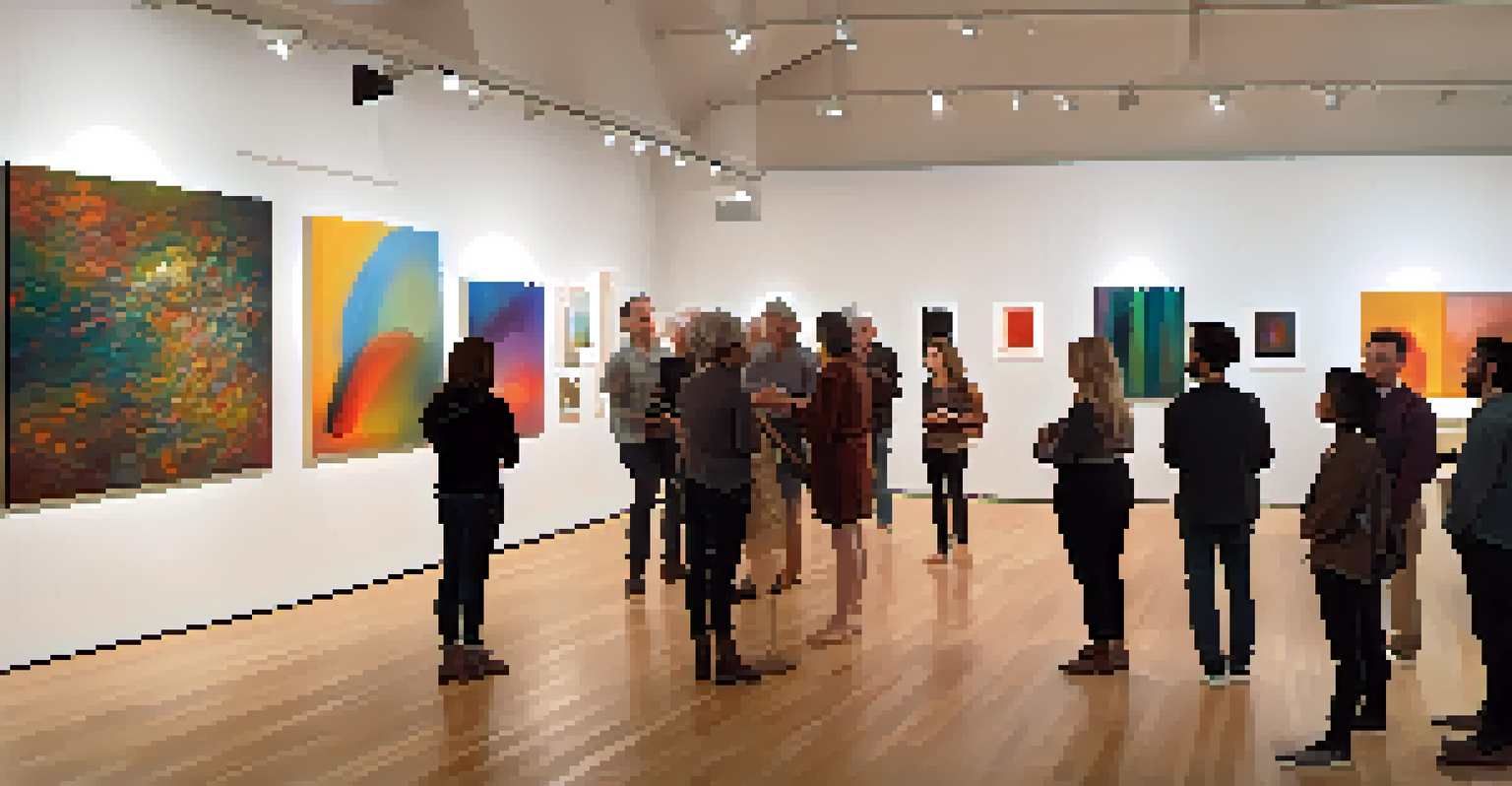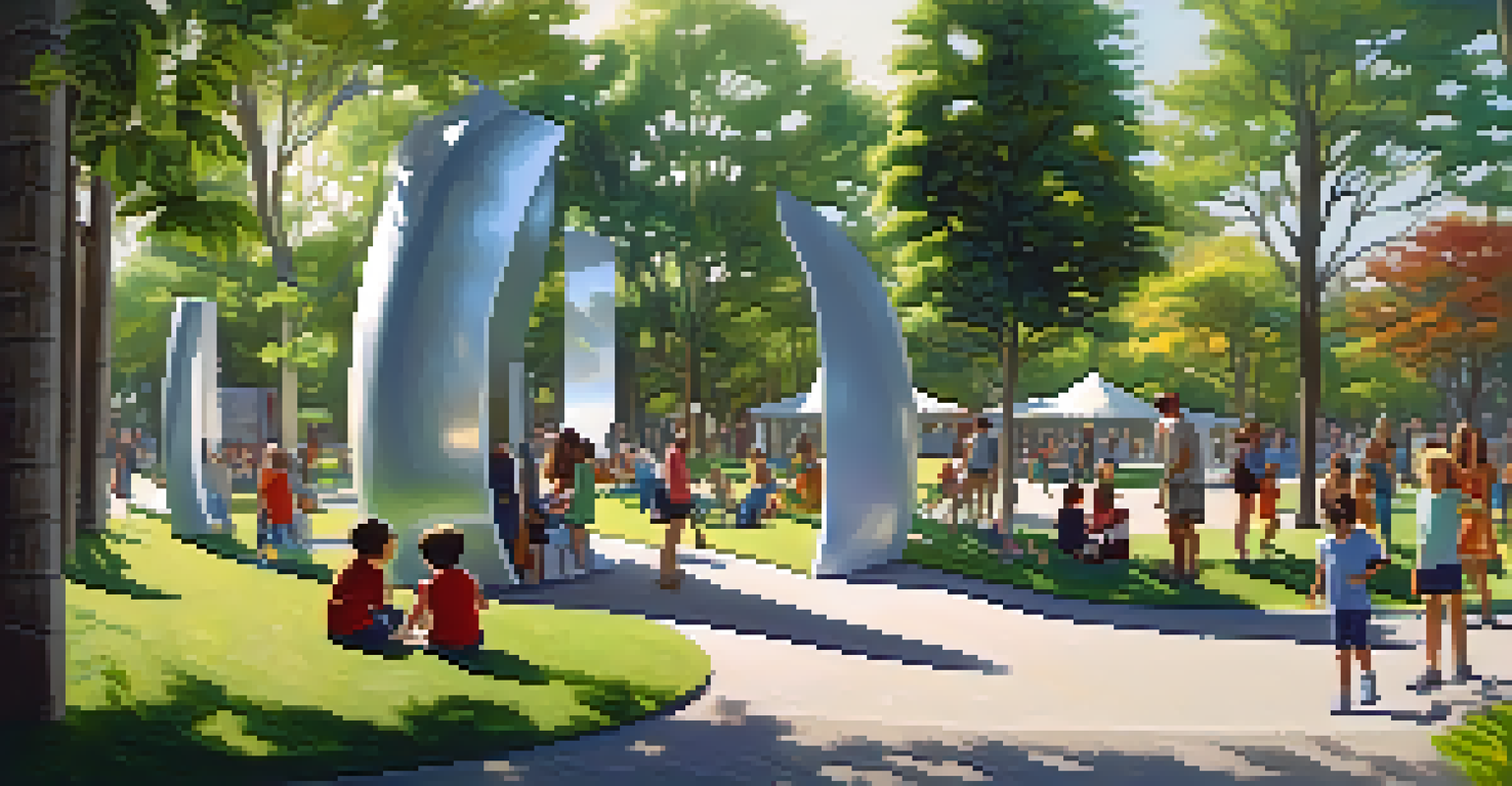Artists in Residence: Enhancing Detroit's Museums and Galleries

Understanding the Role of Artists in Residence
Artists in residence programs are designed to provide artists with dedicated time and space to create their work. These programs often take place in museums and galleries, where artists can interact with the public and share their creative processes. By immersing themselves in these environments, artists can draw inspiration from the rich cultural history and vibrant community of Detroit.
Art is not freedom from discipline, but disciplined freedom.
The goal of these residencies is not just to create art, but to foster a dialogue between artists and the community. This interaction can lead to new ideas and collaborations that benefit both the artist and the audience. Ultimately, artists in residence serve as a bridge between creativity and community engagement.
Through workshops, exhibitions, and public discussions, these artists bring fresh perspectives to Detroit's cultural scene. Their presence can stimulate interest, encourage participation, and inspire a new generation of artists and art lovers alike.
Impact on Local Museums and Galleries
Local museums and galleries benefit significantly from having artists in residence. These artists infuse the space with energy and innovation, often leading to new exhibits that reflect contemporary issues and trends. By showcasing the work of resident artists, museums can attract a diverse audience and create a dynamic cultural hub.

Moreover, the inclusion of resident artists helps museums and galleries expand their programming. They can host events that highlight the creative process, such as live demonstrations or artist talks, which can engage visitors in unique ways. This not only enhances the visitor experience but also builds a stronger connection to the art on display.
Artists Enhance Community Engagement
Artists in residence programs spark meaningful conversations and collaborations, empowering local residents to express themselves through art.
As artists share their stories and techniques, they demystify the creative process, making art more accessible to everyone. This shift can lead to increased visitor engagement and support for local art institutions, fostering a thriving arts community in Detroit.
Fostering Community Engagement Through Art
One of the most profound impacts of artists in residence is their ability to foster community engagement. By involving local residents in their creative processes, artists can spark conversations around important social issues. This participatory approach not only enriches the artist's work but also empowers the community to express itself through art.
Creativity takes courage.
Workshops and collaborative projects are often at the heart of these residencies, allowing community members of all ages to engage with art in a hands-on way. These experiences can build confidence and creativity, transforming how individuals perceive their own capabilities. When people see their ideas reflected in art, it can lead to a deeper appreciation for the creative process.
Such engagement can also strengthen community bonds, as participants come together to share their experiences and perspectives. Ultimately, artists in residence can play a pivotal role in nurturing a sense of belonging and pride among residents, making art a shared and celebrated experience.
Highlighting Detroit's Diverse Artistic Voices
Detroit is known for its rich tapestry of cultures and artistic expressions. Artists in residence programs often showcase this diversity by inviting artists from various backgrounds and disciplines. This not only enriches the local art scene but also ensures that multiple voices and narratives are represented.
By highlighting diverse artistic practices, these programs can challenge stereotypes and broaden the understanding of what art can be. This inclusivity fosters a climate of respect and appreciation for different perspectives, which is crucial for a vibrant cultural landscape. It allows audiences to connect with art on a personal level, resonating with their own experiences.
Diversity Enriches Detroit's Art Scene
By showcasing artists from various backgrounds, these programs foster inclusivity and broaden the understanding of artistic expression in Detroit.
Furthermore, the presence of diverse artists can inspire collaboration and innovation within the community. As artists share their unique approaches and cultural insights, they can spark new ideas and projects that reflect the dynamic nature of Detroit itself.
Supporting Emerging Artists Through Residencies
Artists in residence programs often focus on supporting emerging artists, providing them with valuable resources and mentorship. For many young artists, these opportunities can be transformative, offering them the chance to develop their skills in a supportive environment. Access to studio space, materials, and professional guidance can help them take crucial steps in their careers.
Additionally, being part of a residency allows emerging artists to build connections within the art community. Networking with established artists, curators, and art enthusiasts can open doors to future opportunities, such as exhibitions and collaborations. These relationships are vital for their growth and visibility in the competitive art world.
By nurturing the next generation of artists, these residencies contribute to a sustainable arts ecosystem in Detroit. As these emerging talents gain recognition, they, in turn, inspire others and keep the creative momentum alive in the city.
Creating Lasting Art Installations
Many artists in residence leave a lasting impact on Detroit's cultural landscape through permanent art installations. These works often reflect the community's values, history, and aspirations, creating a sense of place and identity. As these installations become part of the urban fabric, they engage residents and visitors alike.
Such installations can also serve as a catalyst for further artistic endeavors in the area. They inspire other artists to create and collaborate, leading to a flourishing arts scene that attracts attention and investment. As more public art emerges, it can transform neighborhoods, making them more vibrant and inviting.
Supporting Emerging Artists' Growth
Residencies provide emerging artists with essential resources and networking opportunities, helping them develop their skills and careers.
Moreover, these installations can spark important conversations about social issues and community narratives. By integrating art into public spaces, artists can highlight local stories and challenges, encouraging a dialogue that fosters understanding and connection among diverse populations.
The Future of Artists in Residence Programs
As Detroit continues to evolve, the future of artists in residence programs looks promising. These initiatives are adapting to the changing landscape, incorporating digital technologies and new forms of artistic expression. This evolution allows artists to reach wider audiences and engage with the community in innovative ways.
Additionally, there is a growing emphasis on sustainability within the art world, and artists in residence programs are no exception. Many are focusing on eco-friendly practices and themes, exploring how art can contribute to environmental awareness. This shift not only enriches the artistic experience but also aligns with the values of many community members.

Ultimately, the continued success of these programs relies on collaboration and support from both the artistic community and the public. By fostering partnerships between artists, institutions, and residents, Detroit can ensure that its cultural landscape remains vibrant and inclusive for generations to come.